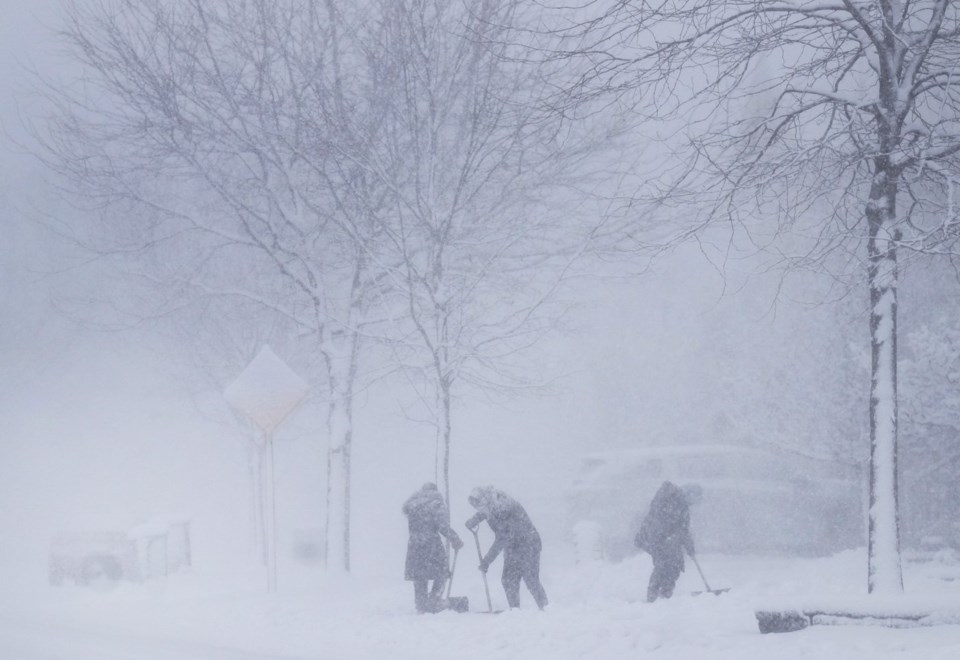Environment Canada has issued a weather advisory for parts of Ontario, saying some areas in cottage country could get another significant burst of snow Wednesday after last weekend's blizzard that downed trees and power lines and left hundreds of drivers stranded.
The agency said Wednesday morning that Huntsville could see up to 14 centimetres of snow accumulation while Bracebridge, Gravenhurst and northern Kawartha Lakes could get up to 10 centimetres through the evening.
The advisory comes after a snowstorm in the region forced a temporary closure of Highway 11 between Orillia and Huntsville over the weekend. Nearby Gravenhurst had declared a state of emergency after it was buried under more than a metre of snow.
Provincial police said in a statement that although Highway 11 has reopened, the force is urging the public to stay alert as more snowfall is expected in the Huntsville area.
Environment Canada has also issued a series of weather alerts in some areas along the shores of Lake Superior, Lake Huron and Lake Ontario. Snow squall warnings are in effect in regions including Sault Ste. Marie and Belleville, which could see snow accumulations of up to 25 centimetres, the agency said.
The Ministry of Natural Resources has issued a flood watch for the Lake Erie shoreline, in effect until Thursday. An early notice of potential flooding was also issued for the Sault Ste. Marie region.
Environment Canada further warned that snow squalls can cause weather conditions to vary, and visibility can suddenly be reduced to "near zero" at times. It added that people should consider postponing non-essential travel until conditions improve.
In eastern Ontario, Environment Canada said the Ottawa area can expect snow accumulations near 10 centimetres through Thursday morning.
In southern Ontario, the agency said up to five centimetres of snow accumulation is possible in some areas, with Toronto getting its first snowfall of the winter.
The weather agency said the advisory is in effect for areas including the Greater Toronto Area, Hamilton and Niagara Region.
It said visibility could be reduced at times, with possibly "hazardous" driving conditions and a "significant impact" on rush-hour traffic in urban areas before the snow tapers off in the evening.
This report by The Canadian Press was first published Dec. 4, 2024.
Rianna Lim, The Canadian Press

